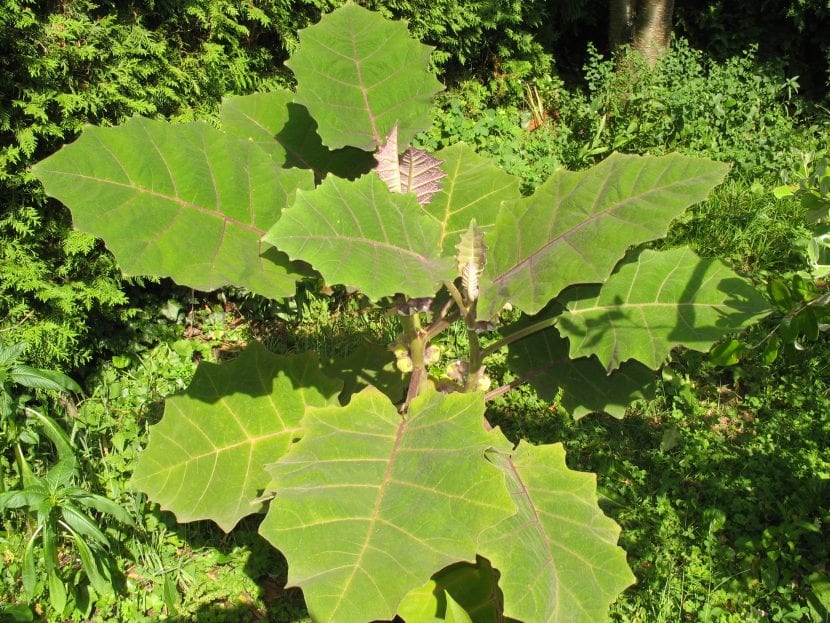
Are you one of those who enjoys trying new foods? If so, you will surely like the lulo… Not only tasting it, but also cultivating it. By having a fairly fast growth, and by producing an interesting amount of fruits, it is a horticultural plant that will give you many joys.
So if you want to know everything about him, In this article I will take the opportunity to present it to you in conditions; that is, revealing all its secrets to you. In this way, it will not be difficult for you to keep it healthy.
Origin and characteristics
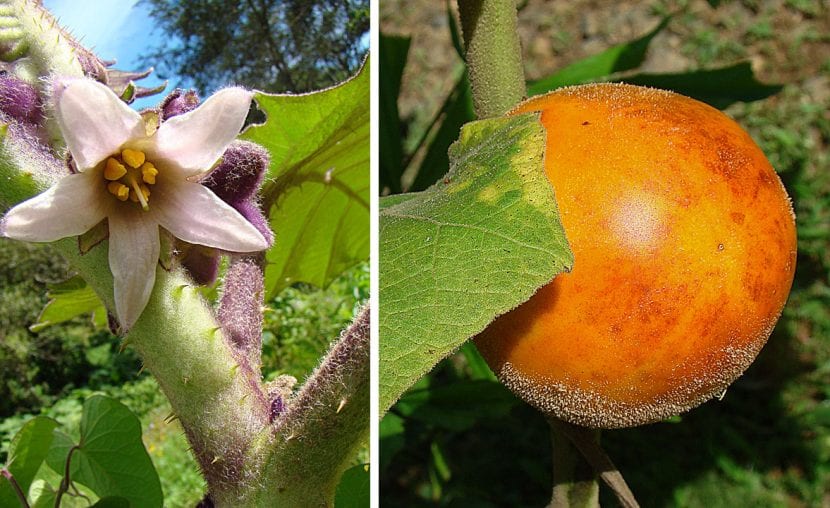
Our protagonist is a perennial herbaceous plant native to Colombia, Ecuador, Panama and Costa Rica. Its scientific name is solanum quitoense, and the common lulo, naranjilla and quito quito. Grows to a height of 60-70cm. It develops large leaves, up to 45cm long, velvety, with an oblong oval shape and a petiole of up to 15cm.
The flowers are white, composed of five petals. Y the fruit is an ovoid berry, 4-6cm in diameter, with yellow, orange or brown skin. The pulp is greenish or yellowish in color and has numerous small whitish seeds inside.
What are their cares?
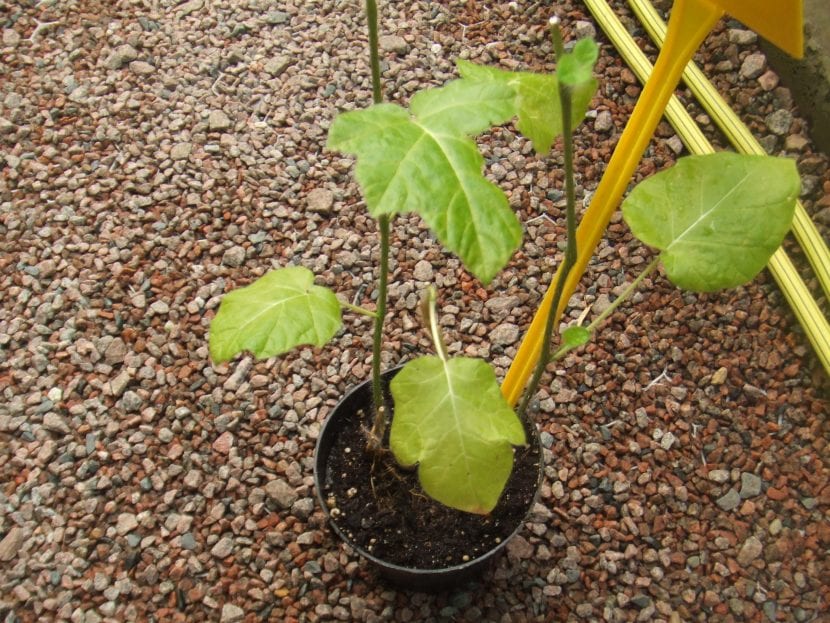
If you want to have a lulo specimen, we recommend providing it with the following care:
Location
It is important that be abroad, protected from direct sun.
Earth
The soil where it will grow must have good drainage y be fertile. In the event that it was not, it would have to be paid with organic fertilizers (such as guano or chicken manure) before planting.
Irrigation
It has to be frequent: every 2 days, or a maximum of 3 during the summer, and every 4-5 days the rest of the year. In case of having it in a pot, you can put a plate under it while the warmer months last.
Subscriber
You have to remember to pay once a month from spring to early fall with organic fertilizers; powder if it is in the ground or liquid if it is potted.
Multiplication
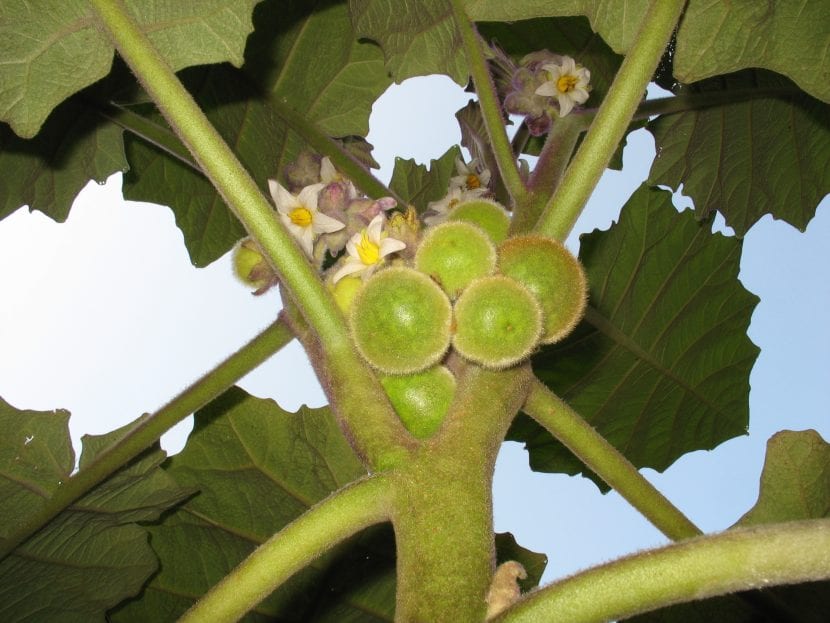
The lulo plant multiplies by seed in spring. For it, you have to follow this step by step:
- First, you have to fill a seedling tray (you can buy it here) with universal growing substrate.
- Then, it is watered and a maximum of two seeds are placed in each socket.
- The seeds are then covered with a thin layer of substrate and watered again, this time with a sprayer.
- Finally, the seedling is placed in a plastic tray without holes. Each time it is watered, this tray (not the seedbed) will be filled with water.
Thus the seeds will germinate in 1 to 2 weeks at most.
Harvest
The fruits will be ready to be picked when they have reached their adult size and color, that is, more or less at three months after flowering.
Pests
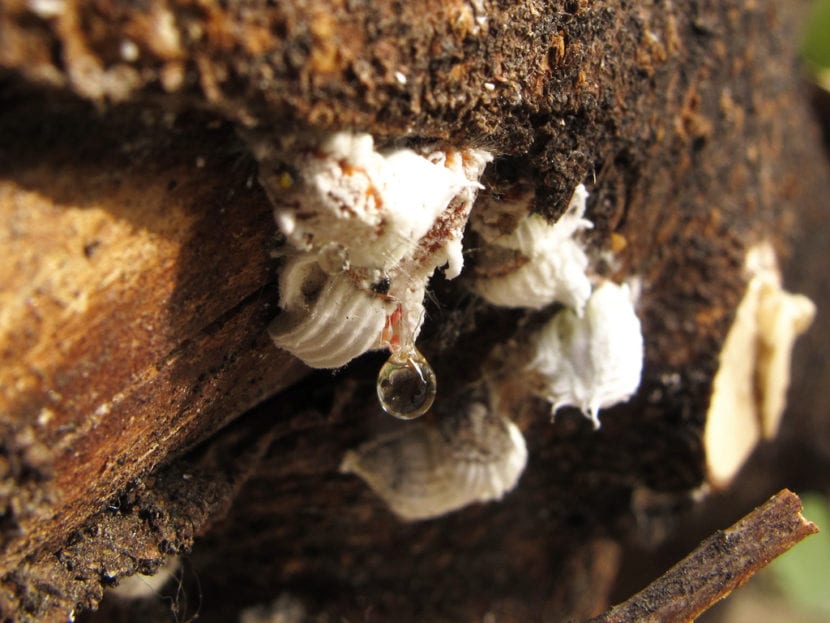
It can be affected by the following:
- Aphids: they are parasites of less than 0,5 cm that feed on the leaves. They can be green, yellow, or brown.
- Mites: like the spider mite for example. They measure less than 0,5cm, and adhere to the stems and leaves (especially the most tender), to feed. They often produce a kind of cobweb, which is what most often gives them away.
- Mealybugs: in dry and warm environments, those that are like small cotton balls, like those that seem to be like limpets, can appear on the tender shoots. You have to eliminate them as they feed on the plant cells.
All of them are treated with neem oil, Bacillus thuringiensis o potassium soap.
Management
It can be affected by the following:
- Alternaria: it is a fungus that causes the appearance of black spots of 1cm with concentric rings of stronger color.
- Botrytis: it is a fungus that causes the appearance of a greyish white powder on the leaves, stems and fruits.
They are treated with copper-based fungicides.
Rusticity
Is sensitive to cold. Temperatures below 8ºC harm it.
What uses does it have?

Edible
The lulo fruit is edible. It can be eaten raw, for example in salads, or to prepare desserts, juices or smoothies. Its nutritional value per 100 grams is as follows:
- Calories: 25kcal
- Carbohydrates: 8g
- Proteins: 0,74g
- Fiber: 2,6g
- Fat: 0,17g
- Sodium: 2mg
- Calcium: 34,2mg
- Iron: 1,19mg
- Vitamin C: 29,4mg
- Water: 87%
Medicinal
The lulo plant can also be used as a medicinal plant, since it has diuretic properties, and also helps to strengthen the skeleton, reduce cholesterol levels and naturally eliminate uric acid and toxins.
As if that were not enough, it can be consumed to fight against nervous diseases and also to sleep better.
Do you have side effects?
This plant contains steroidal alkaloids, such as solanidine and tomatidine, which are compounds that, in large quantities they are toxic.
The most common side effects are nausea, vomiting, dizziness, and indigestion; although these can be avoided if the skin is removed, since that is where they are mainly concentrated. In addition, they should be stored in a cool, dry and dark place since light and humidity increase their content up to 4 times a day.
What did you think of the lulo? Have you heard of him?
Thanks for the info. Some data is new to me. I have a lulo plant that not long ago began to bear fruit, but a worm eats it and spoils it, what could I do?
Hi Liliana.
You can treat it with Cypermethrin 10%, this will eliminate the worms.
Regards!
I live in the state of Florida, USA, summers with a lot of water and high humidity, cool spring and autumn ... between 16 and 20, 22 degrees Celsius, in winter some days the temperature drops to 2 degrees, even 0. What is it more suitable to grow it in these latitudes?
Hi John.
You can follow the instructions specified in the article without problem. From what you count, the climate in your area is suitable for lulo. The only thing, maybe you mix the soil with perlite or some similar substrate so that the water drains better, but only if the one you have tends to compact a lot.
Regards!
SEMBRE LULO, ON EARTH, 6 MONTHS AGO AND STILL NOT FLOWERING….
Hello Noemi.
I will surely do it next year 🙂
Greetings.
very good morning, my question is the following.
Can you make potassium soap at home without chemicals?
Hi, Diana.
Potassium soap is itself a natural insecticide. It does not carry toxic substances.
But yes, it can be done at home. Here explains how.
Greetings.